
Flower Garden Update Mid-November 2024
Hello friends,
I'd thought I'd share with you some of the plants flowering in my garden right now.
First up, my roses have finally started flowering, including my favorite, which is Blackberry Nip, and also the new rose in the back garden Gertrude Jekyll. Unfortunately I can't remember the name of the first rose pictured...
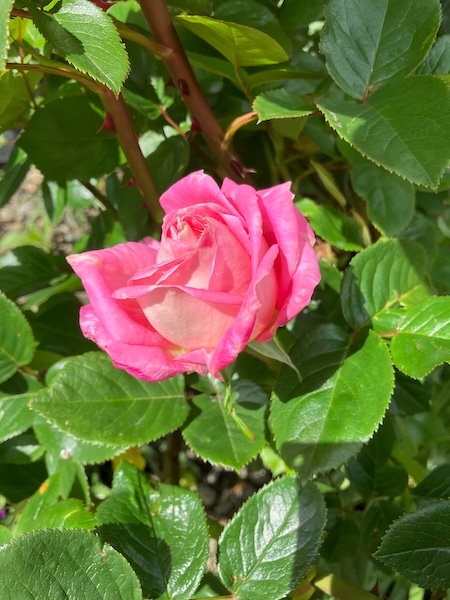
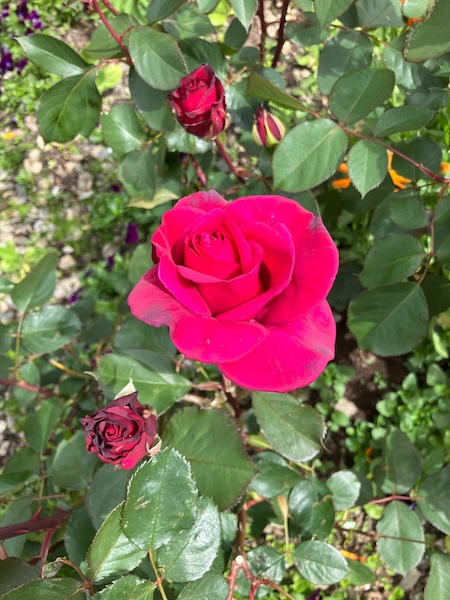
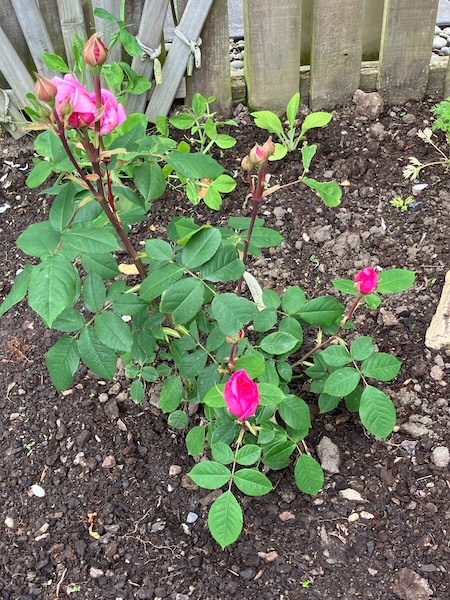
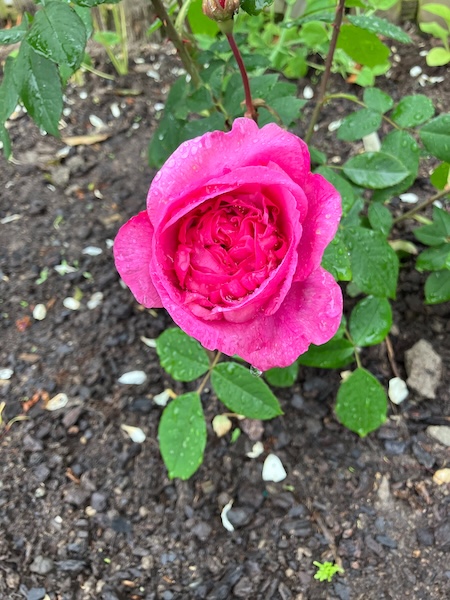
My two new Hostas, Purple Heart and Sleeping Beauty, are looking amazing with new foliage.
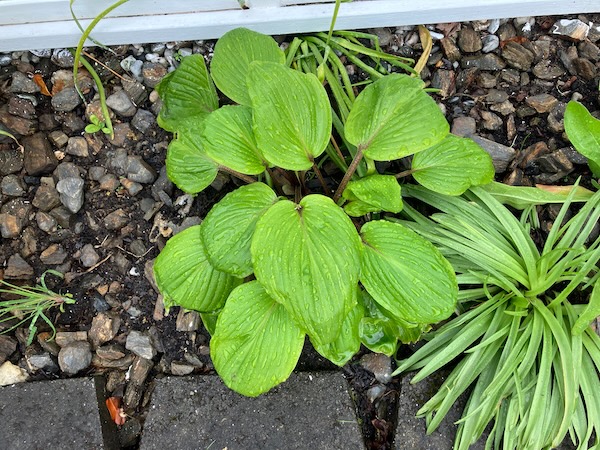

And the pansies I grew from seed from Emerden Garden, Antique Shade and Mulberry Shade, are looking amazing now they are flowering. I'll let some set seed at the end of summer, and then that way they'll populate the garden in years to come.
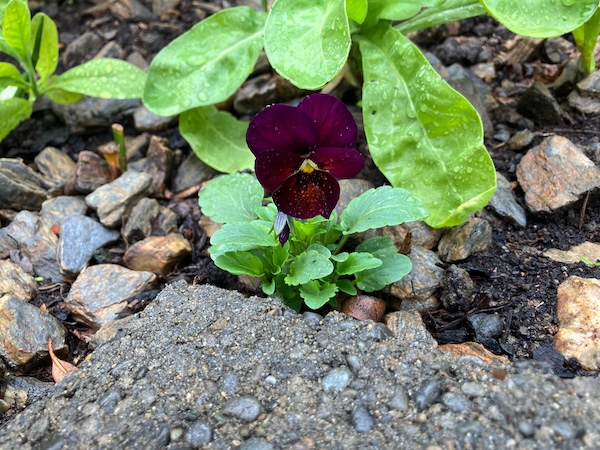
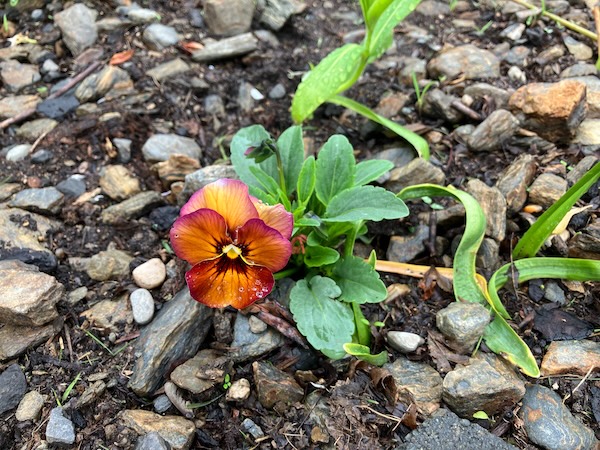
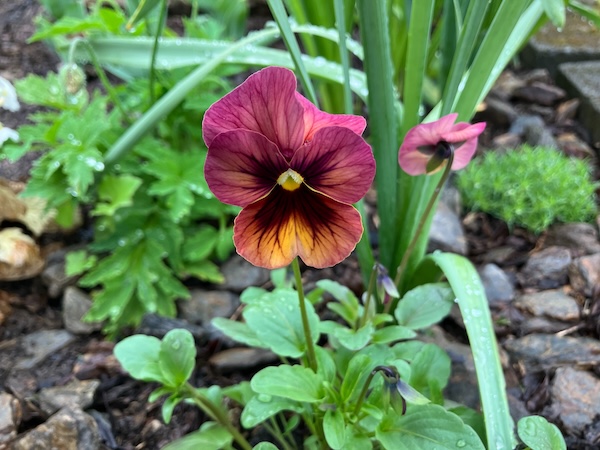
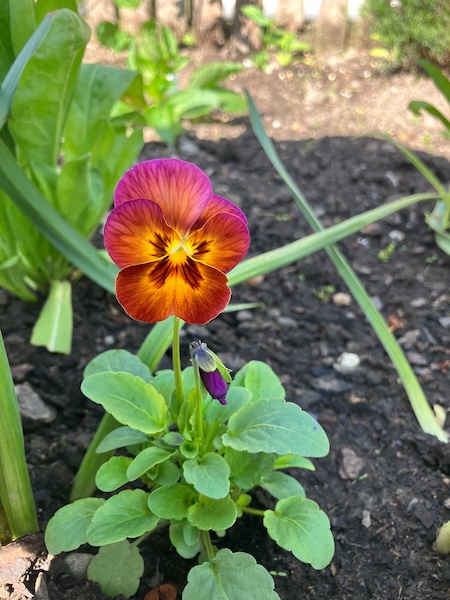
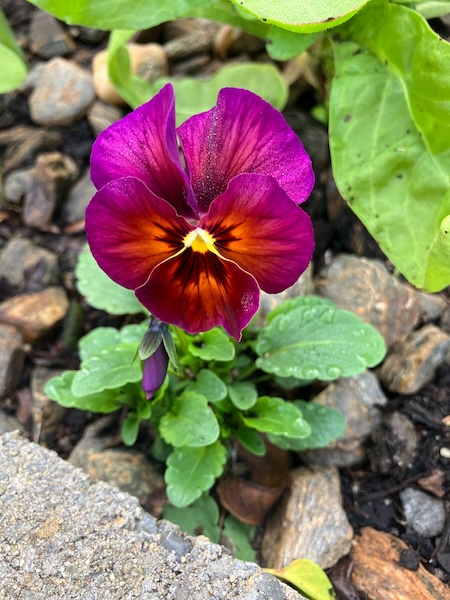
My cosmos are now flowering as well. I have two new varieties this year Sunset Tones (Kings Seeds), and Strawberry Blonde (Emerden Garden), are now starting to flower as well.
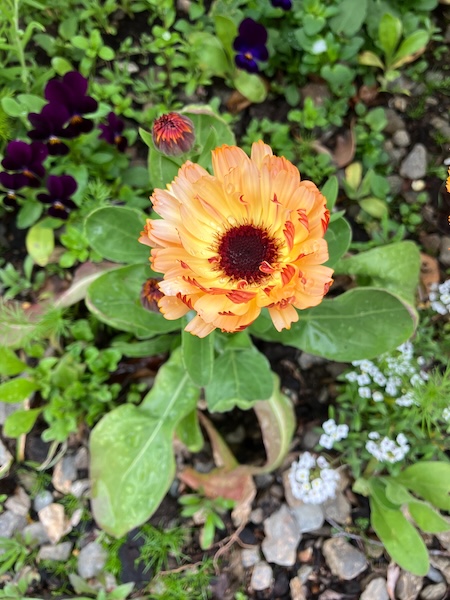
I still have unknown ranunculus flowering in the back garden, and all my peonies are about to burst into flower soon too.
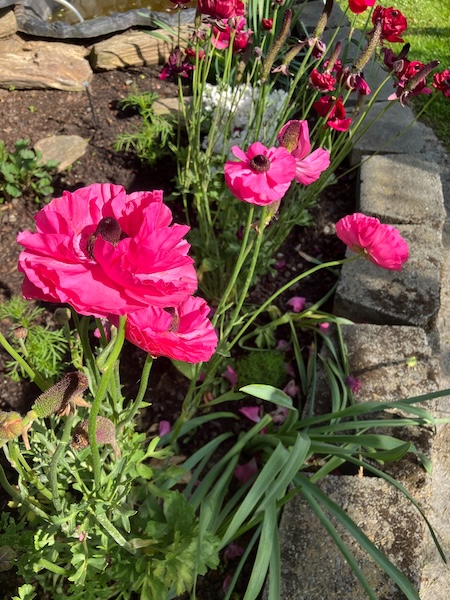
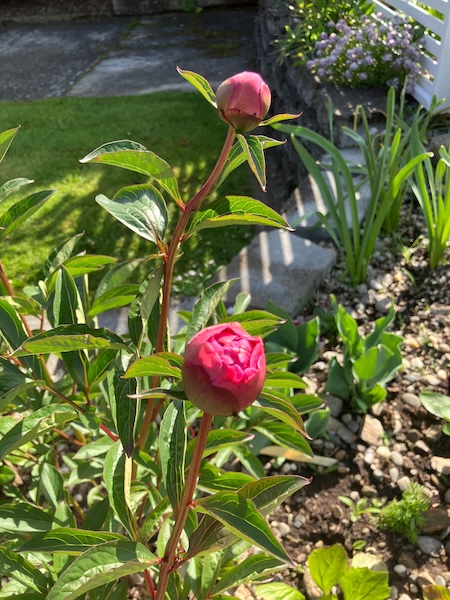
There's even more plants about to flower around my garden, but that'll have to wait until another blog post. I've even spotted some of my older dahlias beginning to form flower buds...
Have a wonderful day
Julie-Ann
Want to discuss my post? Feel free to chat with me on Instagram or Mastodon or Bluesky.
Planting Out Hardy Annuals and Hostas
Hello friends,
The glasshouse is super full at the moment with all the seedlings growing in preparation for planting out into the garden. I recently began planting out some of the hardier annuals when I ran out of potting containers to grow more seeds.
First up was my collection of different Keith Hammett sweet peas. I basically planted them wherever I found vertical growing space for them.
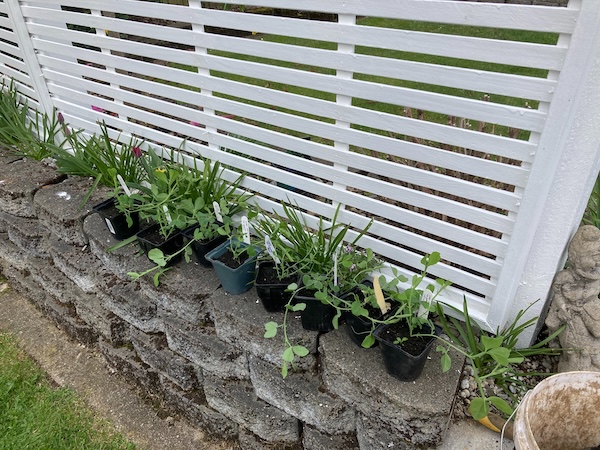
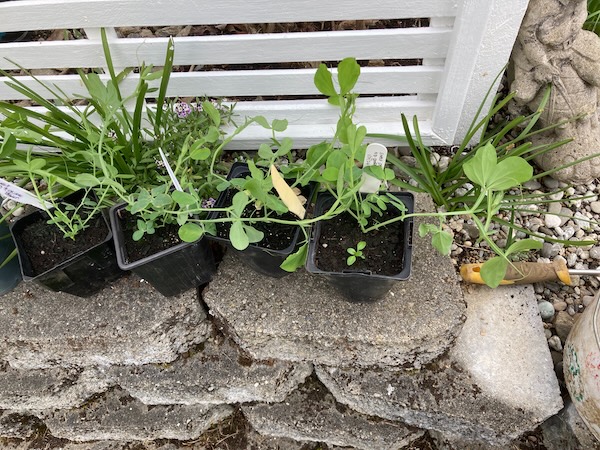
Next up was to plant out my three Calendula varieties, Calendula officinalis, Calendula Sunset Tones, and Calendula Strawberry Blonde. I already have a lot of Calendula officinalis growing in the front garden, so I planted those out in the back garden that has just been redesigned. I then planted the Sunset Tones and Strawberry Blonde varieties in both the front and back gardens. Eventually they'll all breed with one another and set seed, and I'll have heaps of different coloured Calendula everywhere.


And lastly, I went to a local garden center and bought two hostas that were in the back garden redesign plan. I bought the varieties Purple Heart and Sleeping Beauty for underneath the deciduous magnolia tree.
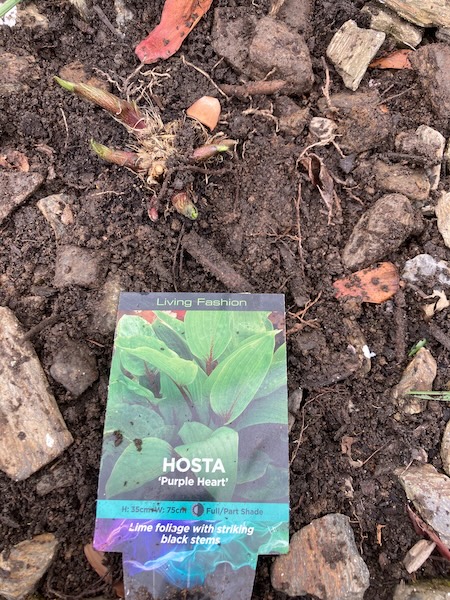
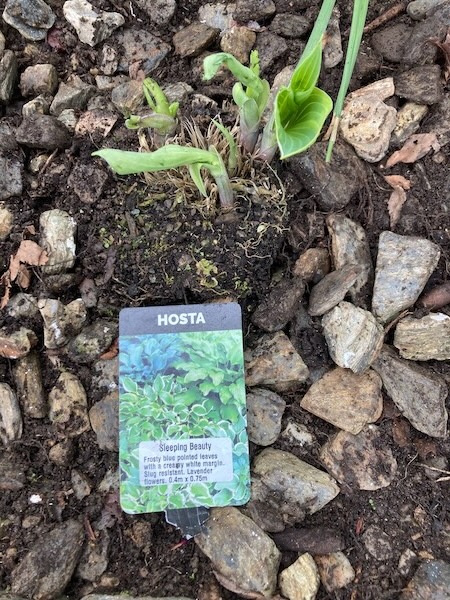
It's already been a couple of weeks, and both hostas are already growing strongly after some protection from slugs and snails.
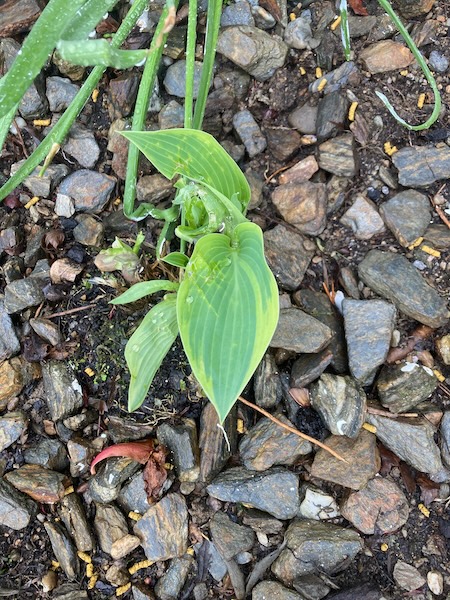
We've had a frost already this week, and one more is possible, so the rest of the seedlings will have to wait until next week at least.
Have a wonderful day
Julie-Ann
Want to discuss my post? Feel free to chat with me on Instagram or Mastodon or Bluesky.
Lavender, Calendula, and Chamomile Oil Infusion for Soap Making
Hello friends,
I've been collecting our lavender, calendula, and chamomile flowers all summer, with the intention of making my own cold-pressed soap with an olive oil infusion from the flowers this autumn. Years ago, when I lived in Wellington, I attended a cold-pressed soap making course, and I have been making my own for years since then. It's an interesting combination of gardening and crafting, with a big splash of science, and it's a lot of fun to make once you know how to take the safety precautions.
The first step was to gather the flowers I dehydrated over the summer. I store them under the stairs in our home, the temperature is cool and dry there, so it's perfect for storing dried flowers.
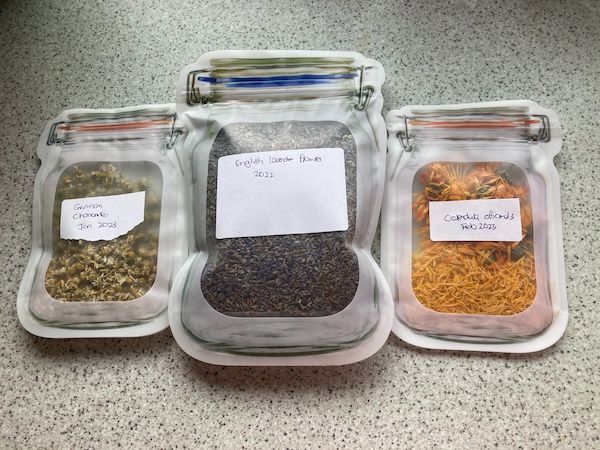
I then filled a glass container up as high as possible with the dried flowers.
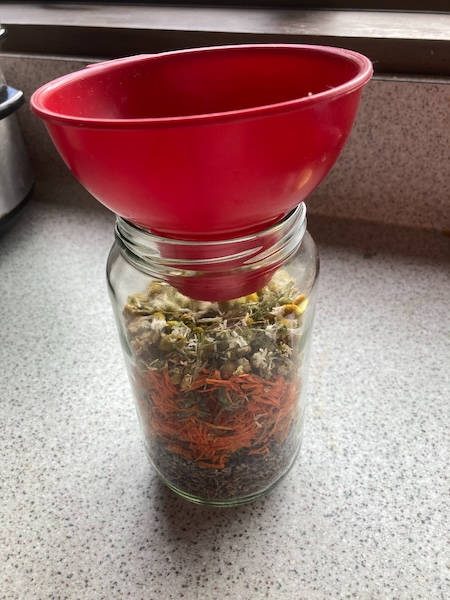

Once the container was full, I filled the jar with olive oil.
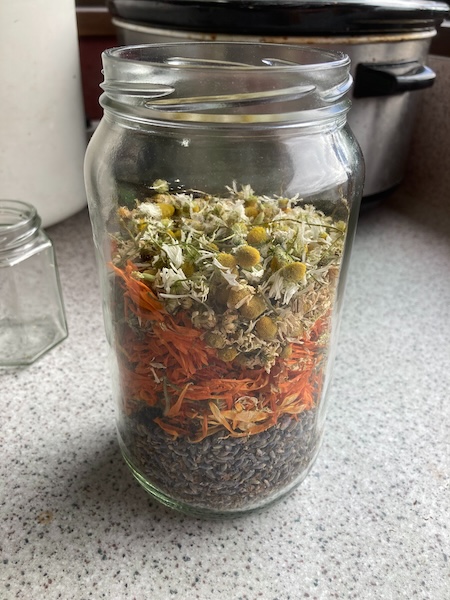
I usually use olive pomace oil, but I didn't have enough to fill the entire jar, so I had to go out and buy some mellow olive oil. The cheapest olive oil is the best to use, as I hate using extra-virgin olive oil for soap making, when it could added to meals.
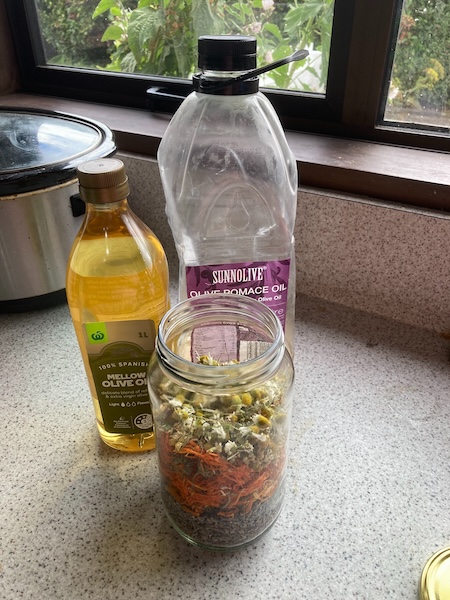
Once the olive oil was filled up to the top, I removed as many air bubbles as possible, and used a spoon to ensure the flowers were mixed evenly.
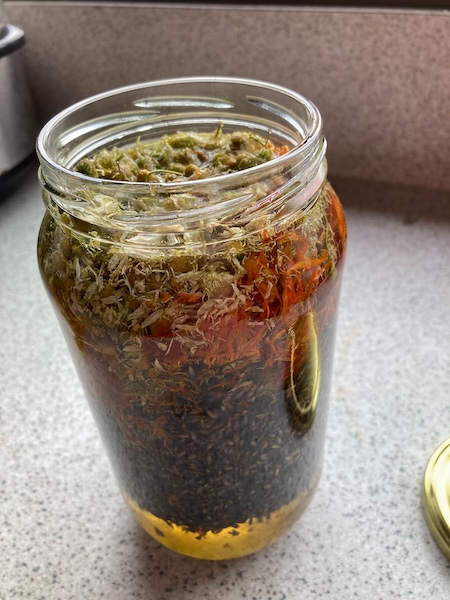
After putting the lid on the jar and dating it, I stored the jar in a cool, dry place for two weeks while it infused.
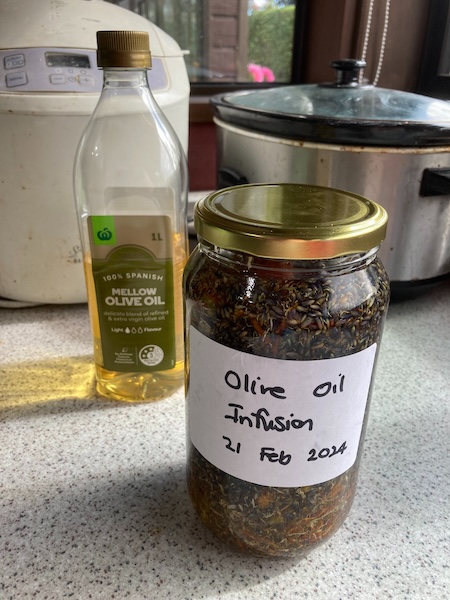
When the time was up I passed the olive oil infusion through a cheese cloth to remove as many flowers as possible. The olive oil had taken on such a beautiful orange colour, and smelled like lavender.
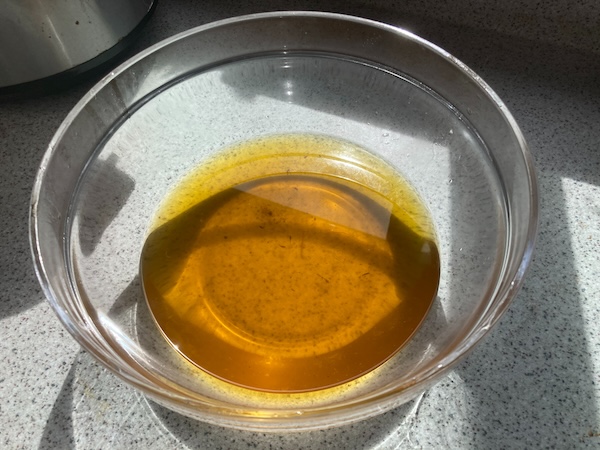
I've now stored the oil infusion away for couple of weeks until it's time to make the soap.
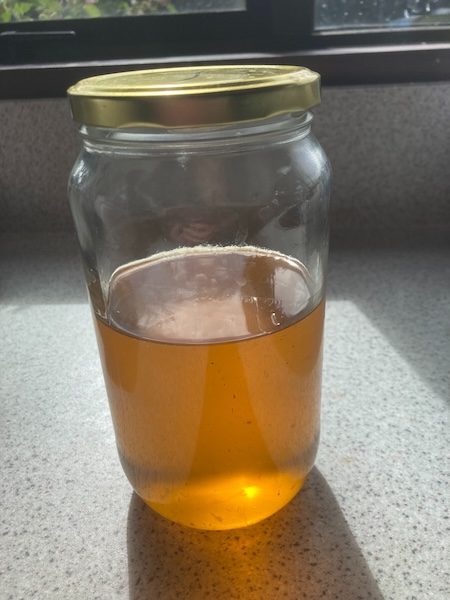
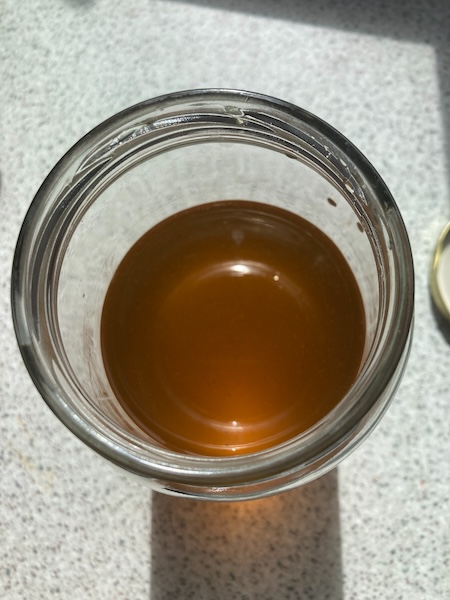
This was such a fun project to do, and I can't wait until soap making day in a couple of weeks.
Have a wonderful day
Julie-Ann
Want to discuss my post? Feel free to chat with me on Instagram or Mastodon or Bluesky.
Harvesting Calendula, Lavender, Chamomile, and Catnip
Hello friends,
It's a very busy time in the garden with lots of harvesting to do, and last week I finally got around to harvesting chamomile, lavender, calendula, and catnip.



It was a bit of a battle to work around the many honey bees, bumble bees, and native bees who were all doing some harvesting of their own, but I finally got the flowers harvested.

The calendula and chamomile went straight into the dehydrator, but I had to chop the lavender stems back to make the lavender flowers fit inside. My dehydrator now lives in the garage, as the scented air flow sets off my asthma.


Once that was done, it was time to harvest the catnip. I grow our catnip in the berry cage, as it's the only way of getting a harvest for our indoor cats, Missy and Rosie, without the neighbourhood cats destroying it first. The catnip plants however had grown like weeds, and were far too large to fit inside the dehydrator.


After giving the branches a trim, luckily there was enough space inside the glasshouse walkway to fit them all in, so I laid the catnip out flat to dry. I put an old mesh door over the glasshouse during the day to stop the birds eating my tomatoes, but it also handily fends off the neighbourhood cats too.

Now that all the plants are dry, they go into storage for later on in the year. I plan to use the chamomile, calendula, and lavender in soap making once I have the time and space to do it. And the catnip will go into the cat's stash of catnip I keep all year for them.
Do you spoil your fur babies with their very own catnip? I find homegrown catnap is much more potent than store bought.
Have a wonderful day.
Julie-Ann
Want to discuss my post? Feel free to chat with me on Instagram or Mastodon.




